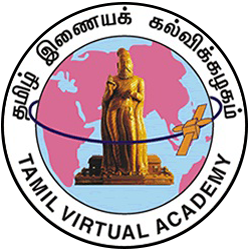Primary tabs
Art and literature are the hallmarks of civilisation. In Tamilnadu art is interlinked with religion and has a divine appeal. Literature is a mirror of a nation’s culture.
Musicians and dancers in TamilNadu were prosperous and well respected in society. They also made significant contributions to social welfare.
Dances in temples were of different kinds. Musical instruments were classified according to the way one played on them (eg) beating the drums or stroking the veena. Inscriptions refer to various types of musical instruments. Musical rhythmic notes were inscribed 1800 years ago in the அறச்சநல்லூர் inscription by மணியன் வண்ணக்கன் தேவன் சாத்தன். Artists were appointed in temples. Some were close to royalty and were conferred titles. They received gold and grains as wages. Some were gifted lands and they served the temple for generations.
The kings patronised art; some of them were great artists also. The Pallava King Mahendra Verman had the title சங்கீரணஜாதி. He also invented a new type of stringed instrument called பரிவாதினி யாழ்.
King Rajaraja employed 402 தளிச்சேரிப் பெண்கள் in the great temple in Thanjavur. தளி means temple and சேரி means common living place. These ladies had permanent jobs and their heirs continued the service. Some of them won the title of தலைக்கோலி after they danced in the temple for the first time.
There are inscriptions which speak of the poets like ஒட்டத்கூத்தர், அருணகிரிநாதர் and காளமேகம். Grammarians like அகத்தியர், பவணந்தி முனிவர், குணவிரபண்டிதர் and அமிதசாகரர் are also mentioned in stone inscriptions. And so are the commentators like சேனா வரையர், நச்சினார்க்கினியர், தெய்வச்சிலையார், பரிமேலழகர் and சாமுண்டிதேவர்.
Information about Sangam age is also found in
copper and stone inscriptions. From the வேள்விக்குடி inscriptions we learn that the Pandyas. The Mahabharata translated got into Tamil, There are also references to literary works like பத்துப்பாட்டு and பதிற்றுப்பத்து. The inscriptions called கபிலக்கல் describes the death of கபிலர்.
The stone and copper inscriptions thus offer a rich resource of information on Tamil art and literature of ancient times.

